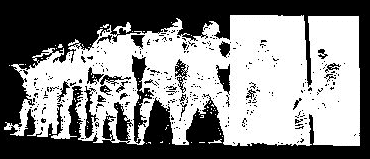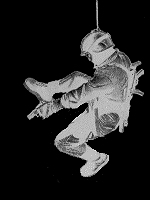
The Story . . .
| Early 1960, as a response to increased urban violence, police and sheriff departments began implementing military strategies against armed and barricaded suspects. |
|
| Future LAPD Chief Daryl F. Gates, christened Special Weapons and Tactics (SWAT). This elite group would revolutionize crisis management techniques worldwide. |
|
| Several tragic incidents spurred SWAT's creation. The Watts riots in August 1965 lasted seven days and involved 10,000 people over an area of 46.5 square miles. Thirty-four people died and more than 1,000 people were wounded. The LAPD realized that innovative tactics were needed to contain and control this new form of decentralized mayhem. |
| A month later during an incident that came to be known as the Surrey Street shootings a barricaded suspect started firing on LAPD officers who responded to a disturbance call, additional tactical deficiencies became evident. By the time the smoke cleared, three officers, a bystander and the suspect were wounded. So Daryl F. Gates, realized that police were going to have to devise another method for dealing with snipers or barricaded criminals than indiscriminate shooting. |
|
|
|
Gates and several of his fellow officers began studying guerrilla warfare and military tactics. They identified the department's best marksmen and provided them with informal special training whenever time permitted. |
| SWAT officers of this period maintained their primary assignments (traffic, detective work, and so forth) while SWAT remained a collateral duty. The unit was so low profile bulletins for upcoming training sessions would say, "Bring your lunch," code for "Bring your rifle." |  |
| By late 1967, the anti-sniper group consisted of the department's 60 best marksmen. Even so, no LAPD money was allotted for special equipment. Officers were forced to become inventive, in order to create tools to suit the demands of the job. |
| SWAT's debut performance occurred on December 8, 1969 when officers attempted to serve arrest warrants to members to the Black Panther Party.Three officers and six Panthers were wounded in the shooting. After an extended gun battle, the Panthers had exhausted their ammunition and were forced to surrender. |  |
 |
The violent nature and high casualty rate caused the LAPD to evaluate the effectiveness of the SWAT organization. In 1971, the Department decided the unit would better serve the city as a full-time entity. |
| The group's composition was one lieutenant, six sergeants, and sixty police officers that were assigned to a newly created Metropolitan division as a full-time platoon. |
| SWAT justified its existence many times over during the 1970s, it took Los Angeles' decision to host the 1984 Olympic Games to spur the city into providing necessary financial backing to equip the unit properly.The additional funds also enabled revolutionary changes in training. |  |
| It had taken 15 years, but SWAT, had evolved into a trained and disciplined unit equipped with high-tech weaponry and sophisticated electronics. In a crisis situation, SWAT can be counted on to respond quickly to any emergency with the planning, training, and tactics necessary to diffuse potentially tragic situations. |  |
| Today, LAPD SWAT is regarded as one of the preeminent hostage rescue teams in the world. |

|

|